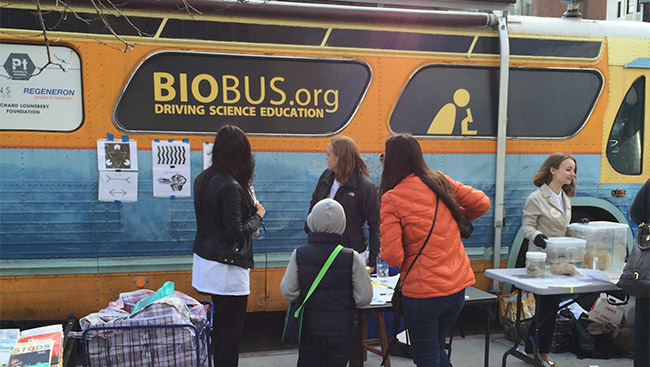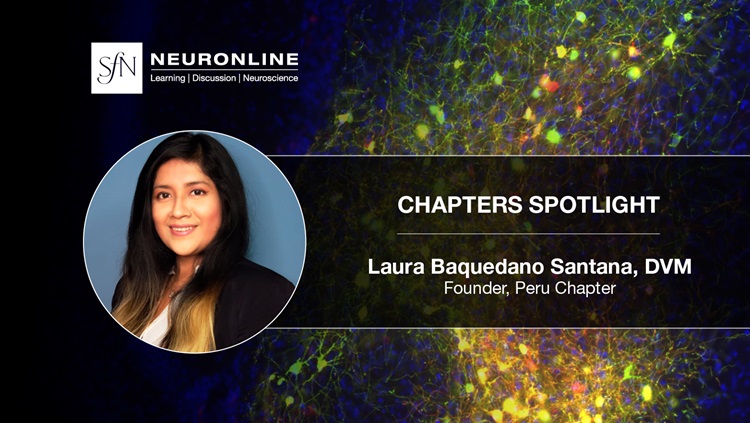
For Brain Awareness Week (BAW) 2016, I organized an event in Harlem, New York. The event centered on Biobus, a mobile lab that enables children and adults to participate in hands-on scientific experiments — in this case, related to neuroscience. Some of the activities included visual illusions and microscopes with slides from mouse brains. The event was quite successful, with 55 volunteers and close to 400 participants.
Based on my experience, here are tips on how to organize an engaging, far-reaching BAW event:
Early Stage Planning
Though BAW takes place in mid-March every year, you need to start thinking about your event well in advance. In October or November of the preceding year, ask yourself (or your team):
- How can your local SfN chapter help you organize, take part, and/or sponsor the event?
- What other potential sponsors exist to help cover costs?
- What will the event be — a series of talks, an event at a local museum, or something else?
- What venue makes sense to pursue?
- Will you invite professors or other big names? Inquire about their availability now.
Publicity
Strategic press and partner engagement can lead to positive coverage and further awareness about the brain. I began working on publicity with Biobus in late December/early January. As a result, our event’s information was listed on seven New York City and parent-focused sites, and the event was recapped on the Dana Foundation blog. Make sure you:
- Approach the SfN chapter in your state and see if they have a list of media outlets. A Google search can also be useful.
- Understand specific timelines of the newspapers and websites you are working with. Some outlets may need you to send in press releases and other materials a couple of weeks in advance.
- Keep the press release short, concise, and interesting.
- Include pictures when you can to enhance your storytelling, but make sure you have permission to use them.
Volunteer Outreach
Volunteers will ensure that your event runs smoothly, so reaching out to potential helpers is key. I received an enormous amount of recruitment help from the Greater New York City Chapter of SfN. When seeking volunteers:
- Ask around for names. The outreach offices of graduate and postdoctoral programs usually have listservs of contacts who want to help out.
- Think about how many volunteers you need and always book extra just in case.
- Consider how you will organize the volunteers at the event, perhaps in shifts if your event is all-day.
Event Logistics
From coordinating the supplies needed for experiments and participant takeaways, to securing someone to run social media the day of the event, it’s important to stay organized and remember to check off the following activities:
- Outline the content and rundown of the event.
- Devise activities that can be done on a low budget, such as the Stroop test (to explore how we name colors) and the jellybean activity (to show how much we rely on the sense of smell when tasting food). Check out a list of ideas and resources on SfN.org.
- Register with the Dana Foundation and order books, pencils, stickers, erasers, or other materials.
- Set up an Eventbrite page and put up flyers. Contact your institution’s press/outreach office.
- Identify who will manage social media promotion about the event in the lead-up through the event. Facebook, Twitter, Instagram, and Snapchat are all important channels to consider using.
- In late February/early March, give volunteers their script and activities; have all the supplies in place; contact the volunteers two weeks, the week of, and day before the event; and check your RSVPs and update your attendance list.
During the Event
Hopefully by now you have the materials, volunteers, and publicity taken care of. Remember that things you hadn’t anticipated will come up, but try to be calm and have fun! Also:
- Count how many people participated.
- Seek feedback from volunteers about what worked, and what they would like to see changed for the next year.
- Take pictures, but make sure you get permission.
Brain Awareness Week is a wonderful opportunity to not only educate the public about neuroscience but also build up your skills to recruit and train volunteers and organize an event. Remember to take advantage of guidance from your institution, local SfN chapter, and Neuronline articles.
How did you make your Brain Awareness event a success? Let us know at baw@sfn.org.
*Photo provided by author.








